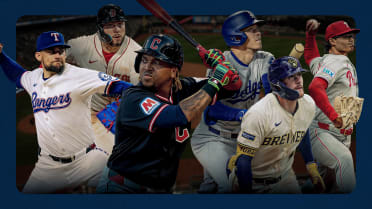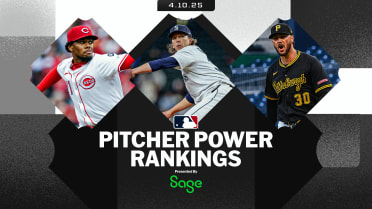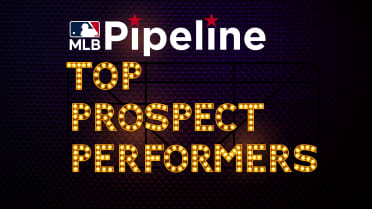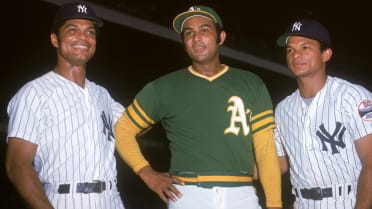As the Cubs head into Boston to begin a highly-anticipated three-game series on Friday, there's no shortage of Statcast™ storylines to keep in mind. Here's 10 facts -- five per team -- to make you look smarter than all your friends as two of baseball's most storied franchises face off.
Let's start with the Cubs, and a reminder that...
1. Jason Heyward is hitting again.
It's easy to forget that not everything went perfectly for the Cubs in their historic 2016 World Series title season. In addition to Kyle Schwarber's April knee injury, free-agent acquisition Heyward struggled all year long, hitting a mere .230/.306/.325 with seven homers. But an offseason's worth of swing work seems to be paying off, as Heyward is off to a .284/.346/.432 start, nearly identical to his .262/.346/.415 career line, as well as leading all Cubs hitters with a 90 mph average exit velocity. As it turns out, an above-average hitter isn't defined by one bad year. Who knew?
2. Willson Contreras still has a cannon.
After all the worry about what Jonathan Lester would do without David Ross, it turns out the answer was already on the roster. Contreras has caught each of Lester's five starts, and he's helped his pitcher avoid his notorious issues with holding runners on by having one of the strongest catcher throwing arms in the Major Leagues. No National League catcher has made a stronger throw on an attempted steal this year than the 87.3 mph laser Contreras unleashed to get Josh Harrison on April 16, and only one throw in all of the Majors (87.8 mph, Martin Maldonado) has been harder.
3. Cubs starters have lost velocity this year.
Chicago's starters are off to a slow start, and part of that is because the group has lost considerable velocity since 2016. So far in 2017, Cubs starters have a 91.1 mph average on fastballs (four-seam, two-seam and sinkers), the lowest in the Major Leagues. For example, Kyle Hendricks is down from 88.1 mph to 85.3 mph on his main sinking fastball, and his ERA is 4.50. Jacob Arrieta is down from 94.1 mph to 91.4 mph on his four-seamer; John Lackey is down from 92.3 mph to 90.7, and he's got a 4.88 ERA. Is this merely a hangover from a long run into November or something worse?
4. C.J. Edwards has a fastball that's about more than just heat.
Edwards is averaging 94.7 mph on his four-seamer so far this year, and that's pretty good, ranking 82nd of the 343 pitchers with 25 four-seam fastballs thrown in 2017. But in terms of spin rate, he's atop the list, with an average spin of 2,671 rpm. Why is that important? High spin on a fastball can allow the ball to defy the effects of gravity for slightly longer than a hitter expects, leading to more strikeouts and popups. In addition to the five whiffs Edwards has on the heater so far, he's allowed allowed only one hit against it -- an .059 average that's among MLB's best.
5. Arrieta is still limiting hard contact.
Of the 156 starters to have at least 500 balls in play against them in the Statcast™ era (2015-17), no one has compiled softer average contact than Arrieta, tied with the great Clayton Kershaw at 85.0 mph. Despite the fact that his ERA is up and his velocity is down in 2017, there's still a lot of reasons to like what the Cubs' ace is doing; only one starter, Michael Wacha, has allowed a fewer percentage of batted balls to be hit 95 mph or harder. That's a big deal, as the Majors in the Statcast™ era hit .538 on batted balls above 95 and .222 on balls below.
What about the Red Sox? Five facts for the Boston faithful...
1. Craig Kimbrel's fastball is still unhittable.
After an inconsistent first year in Boston, punctuated by some serious command issues, Kimbrel is off to a dominant start, with 17 strikeouts and only two earned runs allowed in 9 2/3 innings. A big part of that success has been fueled by his elite four-seam fastball, which ranks in the Top 10 in velocity at 97.9 mph. Unsurprisingly, when hitters offer at it, it rarely ends well -- Kimbrel's 20.8 percent swinging strike rate is the fourth best in baseball.
2. Thomas Pomeranz's four-seam fastball spin rate is down.
Pomeranz was once like Edwards, riding a high-spin fastball to success. Last year, his 2,470 rpm four-seam spin was the fifth highest of 99 pitchers with 750 thrown. But this year, his 2,317 rpm is merely 41st of 102 pitchers with at least 100 thrown, and his ability to miss bats is down with it. After a solid 21.6 percent swinging strike rate in 2016, Pomeranz is down to 18.2 percent in 2017.
3. Jackie Bradley Jr. is just as good an outfielder as you think he is.
Despite missing nearly two weeks with a knee injury, Bradley has made four catches that are rated as Four-Star Plays per the Statcast™ Catch Probability system. (Four-Star Plays are those caught between 26 percent and 50 percent of the time, based on distance and opportunity time.) That's tied for the second most Four-Star Plays in the Major Leagues, behind only Seattle's Jarrod Dyson.
4. The Red Sox have the highest Expected Batting Average.
Though the Sox have somehow only hit 11 homers -- as many as the Brewers' Eric Thames has by himself -- that doesn't mean there's nothing positive to take away from their offense's start to the season. They actually have the highest xBA in the Majors, which is a measure that rates quality of contact (based on launch angle and exit velocity) along with strikeouts. Batting average doesn't have much at all to do with power, of course, so if you go deeper into Expected wOBA, Boston's lineup is fifth best. Since the Red Sox's actual wOBA is only 14th, this might just suggest better things to come. After all, a lineup this talented has to outhomer Milwaukee's slugging sensation at some point, right?
5. The hardest-hitting Red Sox batter has been Mitch Moreland, of all people.
That's right, Boston's exit velocity leader isn't Mookie Betts, Dustin Pedroia, Hanley Ramirez, Andrew Benintendi or Xander Bogaerts. It's not even Pablo Sandoval or Bradley. It's the relatively light-hitting (for a first baseman) Moreland, who had been a below-average hitter in three of his last four years with Texas, who is hitting the ball at an average of 92.4 mph, the highest of any Boston hitter. He's got two of the Red Sox's league-low 11 homers, but he's also got a league-leading 11 doubles.
Mike Petriello is an analyst for MLB.com and the host of the Statcast podcast. He has previously written for ESPN Insider and FanGraphs.



